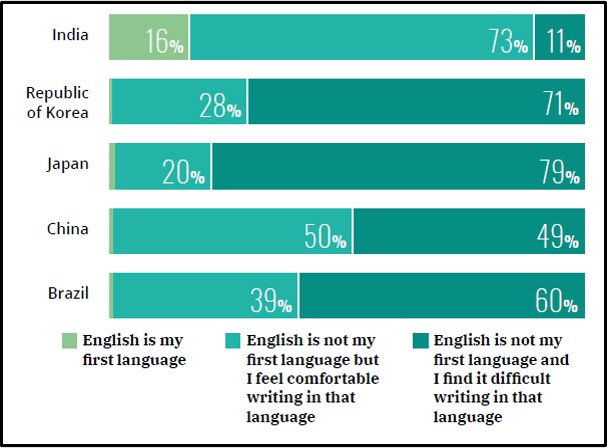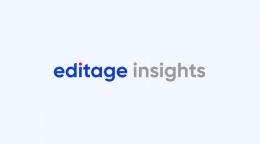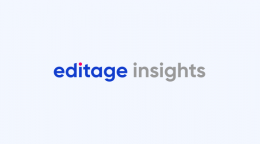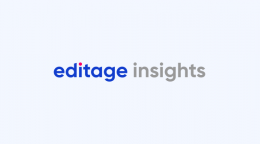Can pre-submission manuscript editing improve your chance of acceptance?

When it comes to science and research, English has been established as the language of communication. Most top peer-reviewed journals are published in English, with more than 90% of the indexed scientific articles in the natural sciences been published in this language. What’s more, a study published in 2017 found that papers published in English seem to be cited more than those published in other languages (66.3% vs 54.7% papers cited).1 However, English is not the first language for a majority of the world’s researchers, who are vying to get their research published in reputed peer-reviewed journals. In fact, in China, which contributes to a bulk of the global research output, only 1% of the 1.3 billion people have English as the first language.2
Fig. 1: English language proficiency by country

Source: Author Perspectives on Academic Publishing: Global Survey Report 2018, Editage
The truth is that even though ESL (English as a second language) authors publish ground-breaking research in their first language, it’s unlikely to get international recognition or impact until it is published in a top English-language journal. With the focus firmly on new discoveries, fueled by an intense pressure to publish, little is said about the transformational journey that a manuscript goes through until it is ready for publishing in an international peer-reviewed journal. In fact, even native speakers of English, sometimes find it hard to communicate very technical information simply and clearly. The challenge being an ability to distance yourself from your science and communicate it to a person who, unlike you, is not an expert in the field. As we ready for Peer Review Week 2020, which focuses on ‘Trust in Peer Review’, we discuss the crucial role editing plays in scholarly publishing.
Barriers to high-impact research publication
While countries like China, Japan, and South Korea are counted among the world’s top producers of research, their authors often face tough challenges. For one, manuscripts from Non-English-speaking countries have a much lower acceptance rates than those from English-speaking countries (29.1% vs 40.3%).3 While language may not be the only reason for rejection, an Editage Global Author Survey showed that 76% of ESL authors find it difficult to prepare a manuscript in English.2 What’s more, cultural differences in how international researchers present their work causes further problems when it comes to navigating a complex English-based publishing process, especially when it comes to journal submissions and peer reviews.
Fig. 2: Difficulty in preparing manuscripts for publication in English-language journals

Source: Author Perspectives on Academic Publishing: Global Survey Report 2018, Editage
Peer reviewers don’t have it easy either. The Council of Science Editors holds that peer reviewers must evaluate the accuracy and novelty of the research, check if the writing is correct and clear, assess ethical compliance, and produce an unbiased, constructive and instructive review of the manuscript.4 With detailed checks required for each manuscript, peer reviewers are struggling to keep up even as the volume of submissions is on the rise every year. A 2018 Publons study showed that 10% of reviewers are responsible for 50% of the over 13.7 million manuscripts submitted a year.5 However, the rising volume of research is not matched by a proportional growth in the number of reviewers. In such a scenario, it’s not uncommon for reviewers to judge manuscripts based on how easy it is to understand; papers that have poor English and language errors will almost always find themselves on the rejected pile.
With rejection rates topping 90-95% in reputed journals,6 authors are increasingly criticizing the peer review and editorial system as inherently biased. Journal editors, the gatekeepers of scientific knowledge, may pre-judge the language quality or the relevance of a topic just based on the names on a manuscript. One insightful study found that editorial boards are mostly comprised of people from wealthy, developed countries, which could be a reason for them to overlook potentially high-impact research from developing nations. Unfortunately, such neglect means that local research with a global impact can often go ignored by top high-impact journals. 7
Shift towards top-journal publishing and pre-submission checks
On the other hand, where you publish your work can, directly or indirectly, affect your researcher career, funding success, and professional reputation. This is supported by a study, based on Thomson Reuters Web of Science data, which found a scientist’s reputation and standing within the research community is largely based on both the quantity and quality of his/her publications.8 This has resulted in a behavioral change among authors who are, now more than ever, working towards getting their research published in high-impact international journals. While there has been a boom in the number of submissions to top journals, this is only clogging up an already over-burdened system.
Fig. 3: Problems for authors in the publishing industry
Source: Author Perspectives on Academic Publishing: Global Survey Report 2018, Editage
To maximize their chance of acceptance, authors often turn to mentors and experienced colleagues proficient in English or rely on professional editing services to help them polish their paper and level their playing field. On the other hand, top journals also advise authors to use academic editing services to deliver publication-ready manuscripts. This not only helps to streamline the journal editorial and peer review process, it allows them to publish more high-impact research articles, which in turn, strengthens their position as a trusted peer-reviewed journal.
But can in-depth editing and readiness checks increase an author’s chances of acceptance?
To understand the impact editing can have on manuscript acceptance, Editage studied the fate of 191 manuscripts it had edited as part of a partnership with Wolters Kluwer (WK). Of the 191 manuscripts, 60% (114) were published in the WK journals of the authors’ choice, with the rest being published elsewhere. Further, 54% (103) were published in less than a year from the time they were edited. These figures are considerably higher than the 36% acceptance rate for manuscripts submitted to WK journals in a single year (2017). In other words, papers edited by Editage had a 24% better acceptance rate and an 18% higher chance of publication within a year, when compared to other papers submitted to WK journals.9
Fig. 4: Acceptance rate of manuscripts submitted to WK journals
Source: Can language editing improve manuscript acceptance rates? An Editage Report
Language editing services such as Editage are often seen as an unnecessary step, but this report shows that such services, with higher-than-average acceptance rates, can provide a tangible boost to a researcher’s publication goals. In fact, the Scientific Editing service by Editage takes things one step further to give you 30% faster acceptance rates by reviewing the research itself apart from improving the manuscript language and format, while supporting authors through the publishing process.
You can also download the Can language editing improve manuscript acceptance rates? An Editage Report at the bottom of this article.
The future of high-impact publishing for the smart researcher
Editage’s Scientific Editing service brings together three distinguished experts from your field of research to help you get published in reputed international journals. You will get to collaborate with a team of handpicked experts that include:
1. A peer reviewer for top journals like Nature
2. A senior science editor with 20+ years of experience, and
3. A managing editor, who has supported hundreds of authors like you, get published every year.
With Scientific Editing, your research undergoes an in-depth technical evaluation from the perspective of top-journal reviewers, your manuscript is polished to significantly improve language, readability and presentation, and you are provided clear guidance and support to help you meet the acceptance criteria for top journals. What’s more, this personalized includes unlimited re-editing and reformatting support for multiple journals to help you achieve your top-journal publishing goals faster.
While it may be easier for researchers to rely on their network to improve their manuscript, going without professional editing services can be a mistake. With the surge in research and submissions, not having the best version of your manuscript puts you at a competitive disadvantage. Not putting your best foot forward may cost you months of waiting time and worry, only to be rejected. Change your fate with Scientific Editing’s combination of in-depth developmental editing, advice from top-journal peer reviewers, and publication support, which has helped 400+ papers get published in high-impact academic journals, such as Elsevier, ACS, and Wiley-Blackwell, in an average of just 61 days. Consult an expert now or write in to request@editage.com to know how Scientific Editing can help you achieve your publishing goals.
References:
- M. S. Di Bitetti, J.A. Ferreras – Publish (in English) or perish: The effect on citation rate of using languages other than English in scientific publications. Ambio, 2017. Retrieved from https://www.ncbi.nlm.nih.gov/pmc/articles/PMC5226904/
- Author Perspectives on Academic Publishing: Global Survey Report 2018, Editage. Available at https://campaign.editage.com/global_survey_report_2018/
- S. Ehara, K. Takahashi – Reasons for rejection of manuscripts submitted to AJR by international authors. AJR Am J Roentgenol, 2007. Retrieved from https://pubmed.ncbi.nlm.nih.gov/17242215/
- Council of Science Editors’ White Paper on Publication Ethics: Reviewer roles and responsibilities. Retrieved from https://www.councilscienceeditors.org/resource-library/editorial-policies/white-paper-on-publication-ethics/2-3-reviewer-roles-and-responsibilities/
- Publons Global State of Peer Review Survey, 2018. Available at https://publons.com/static/Publons-Global-State-Of-Peer-Review-2018.pdf
- S. S. Khadilkar – Rejection Blues: Why Do Research Papers Get Rejected? The Journal of Obstetrics and Gynecology of India, 2018. Retrieved from https://link.springer.com/article/10.1007/s13224-018-1153-1
- S. Iqbal – Science journals might be more international but not their editorial boards. The Wire, 2018. Retrieved from https://thewire.in/science/science-journals-might-international-not-editorial-boards
- A. M. Petersen, et al. – Reputation and impact in academic careers. Proceedings of the National Academy of Sciences, 2014. Retrieved from https://www.pnas.org/content/early/2014/10/03/1323111111.abstract?sid=cfe6f1f4-f2e7-43e0-b54b-c3aa1a64c810
- Can language editing improve manuscript acceptance rates? An Editage Report. Available for download with this article.
Can language editing improve manuscript acceptance rates_An Editage report_0.pdf
Comments
You're looking to give wings to your academic career and publication journey. We like that!
Why don't we give you complete access! Create a free account and get unlimited access to all resources & a vibrant researcher community.

Subscribe to Conducting Research













